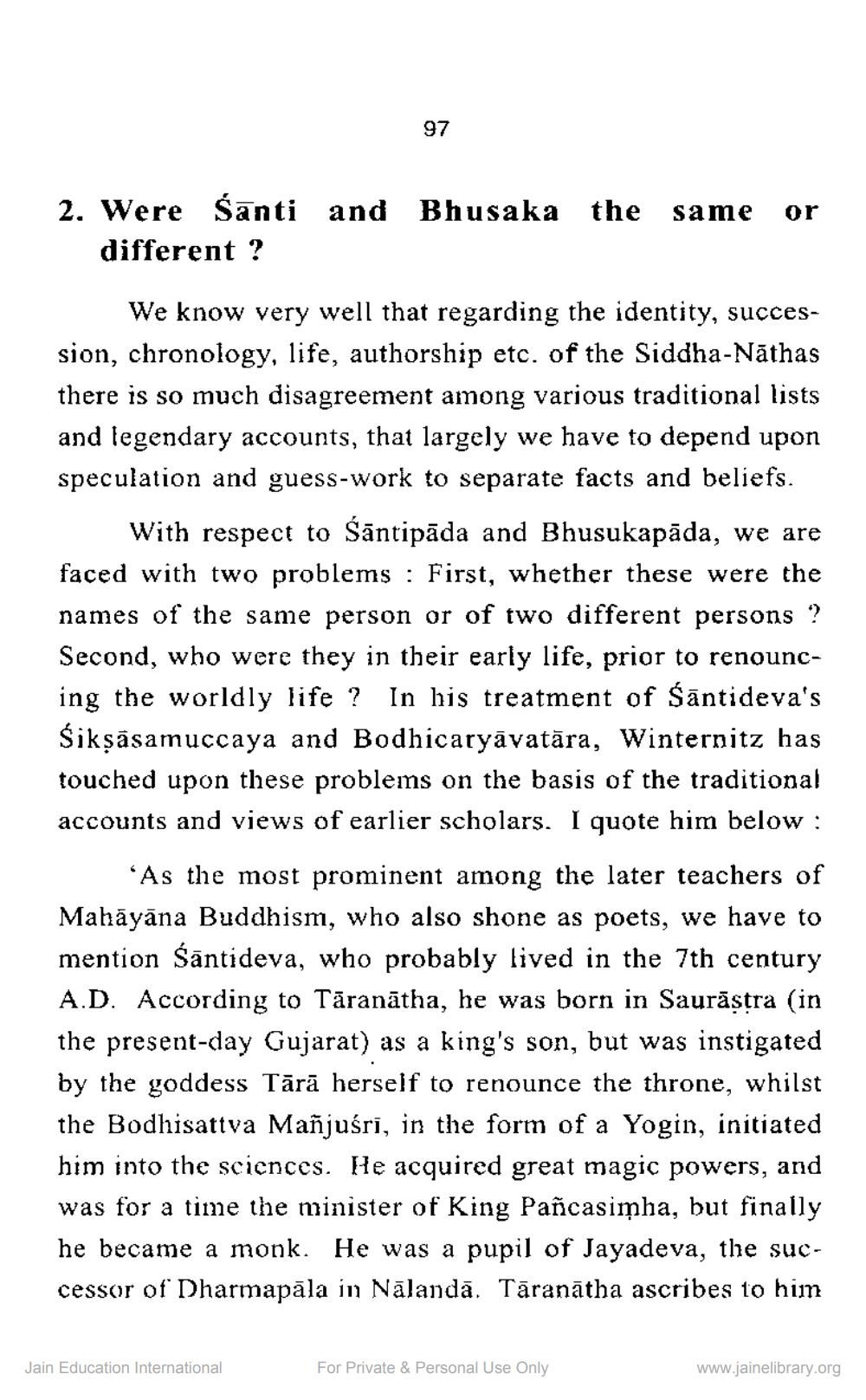Book Title: Some Notes On Buddha Sahajayani Siddha Natha Tradition Author(s): H C Bhayani Publisher: ZZ_Anusandhan View full book textPage 5
________________ 97 2. Were Santi and Bhusaka the same or different ? We know very well that regarding the identity, succession, chronology, life, authorship etc. of the Siddha-Năthas there is so much disagreement among various traditional lists and legendary accounts, that largely we have to depend upon speculation and guess-work to separate facts and beliefs. With respect to śāntipāda and Bhusukapāda, we are faced with two problems : First, whether these were the names of the same person or of two different persons ? Second, who were they in their early life, prior to renouncing the worldly life ? In his treatment of śāntideva's Śikṣāsamuccaya and Bodhicaryāvatāra, Winternitz has touched upon these problems on the basis of the traditional accounts and views of earlier scholars. I quote him below : ‘As the most prominent among the later teachers of Mahāyāna Buddhism, who also shone as poets, we have to mention śāntideva, who probably lived in the 7th century A.D. According to Tāranātha, he was born in Saurāstra (in the present-day Gujarat) as a king's son, but was instigated by the goddess Tārā herself to renounce the throne, whilst the Bodhisattva Mañjuśrī, in the form of a Yogin, initiated him into the sciences. He acquired great magic powers, and was for a time the minister of King Pañcasimha, but finally he became a monk. He was a pupil of Jayadeva, the successor of Dharmapāla in Nālandā. Tāranātha ascribes to hiin Jain Education International For Private & Personal Use Only www.jainelibrary.orgPage Navigation
1 ... 3 4 5 6 7 8 9 10 11 12
